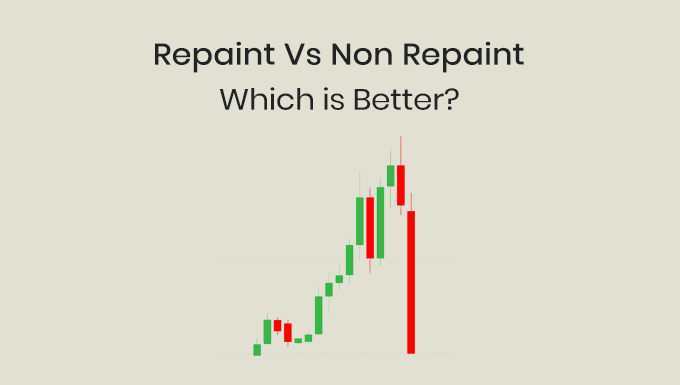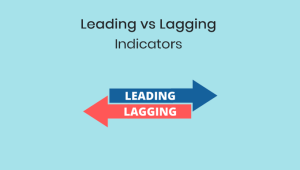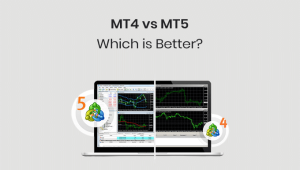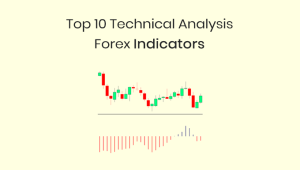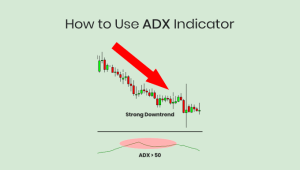Repaint Vs Non Repaint Indicators – Which is Better? One of the frequently debated topics among forex traders is the reliability and efficiency of ‘repaint’ and ‘non-repaint’ indicators. When diving into the world of trading, whether it’s stocks, forex, or commodities, one thing traders often struggle with is selecting the perfect indicator for their strategy. Indicators are like tools in a toolbox; not every tool is right for every job. While both have their pros and cons, the age-old debate remains: which one is superior? This article seeks to answer this question, providing clarity on what each type entails and which might be the best fit for your trading strategy.
Table of Contents
• Pros and Cons of Repainting Indicators
• Pros and Cons of Non-Repainting Indicators
• How to Choose Between Repaint and Non-Repaint Indicators
• The Impact of Timeframes
• Common Myths About Repaint and Non-Repaint Indicators
• Real-World Applications and Case Studies
• Conclusion
• FAQs
Basics of Repaint vs Non Repaint Indicators
What Are Repaint Indicators?
Repaint indicators are those that can change their values retrospectively. In simpler terms, the latest data can overwrite or ‘repaint’ the previous data. This feature makes them reactive and adaptable to recent market changes, but it also poses some challenges in terms of reliability.
The Way Repainting Works
The mechanism behind repainting lies in its algorithm. It continuously recalculates the values based on the most recent data. While it seems like a beneficial trait, it can make historical data unreliable for traders, leading to potentially flawed strategies.
What Are Non Repaint Indicators?
On the flip side, non-repaint indicators have fixed values once they are formed. These indicators will not change their previous readings regardless of new market conditions. This offers a more stable and reliable form of data presentation, although it might lack adaptability.
Significance in Trading
The type of indicator you choose—repaint or non-repaint—can significantly influence your trading decisions. Repaint indicators are often better for short-term trades, offering timely entries and exits. However, for long-term trading, non-repaint indicators may offer a more stable data set to analyze.
Suitability for Traders
The suitability largely depends on your trading style and risk tolerance. Day traders may find repaint indicators more useful due to their adaptability, whereas swing traders may lean toward non-repaint indicators for their stability.
The Pros and Cons of Repainting Indicators
Advantages of Using Repainting Indicators
Repainting indicators are often praised for their reactivity. They adapt quickly to market changes, providing immediate signals that can be particularly beneficial for short-term or intraday trading.
Real-Time Adaptability
One of the core benefits is real-time adaptability. As market conditions fluctuate, repaint indicators adjust themselves accordingly. This often results in more timely signals for entry or exit.
Versatility in Various Market Conditions
Another advantage is versatility. These indicators work well in both trending and range-bound markets, offering signals that adapt to the market’s volatility.
Short-Term Profit Opportunities
Short-term traders can leverage the rapid signal adjustments for quick profits. Although the signals are subject to change, skilled traders can interpret them effectively for quick decisions.
The Downside: Reliability Issues
However, repaint indicators have a glaring drawback: they lack reliability. The same feature that allows them to adapt to market changes quickly makes them unreliable for backtesting and historical data analysis.
The Pros and Cons of Non-Repainting Indicators
Advantages of Using Non Repainting Indicators
The Stable Nature
Non-repainting indicators stand as the epitome of stability in the realm of trading indicators. Once a signal is generated, it remains fixed and won’t change retrospectively, making these types of indicators reliable tools for analyzing historical data.
Suitability for Long-Term Trades
Given their unchanging nature, non-repainting indicators are often recommended for long-term trades. Their signals provide a solid foundation for traders to make informed decisions without worrying about sudden shifts in data.
Reliability in Backtesting
One of the most valuable features of non-repainting indicators is their reliability in backtesting. Because they don’t alter past data, traders can run accurate backtests to evaluate the efficacy of their strategies, which is crucial for long-term success.
Best Suited for Experienced Traders
Due to their lack of flexibility, non-repainting indicators are often best suited for traders who have a deep understanding of market nuances. These traders can supplement the indicators with other forms of analysis to create a well-rounded trading strategy.
The Downside: Lack of Responsiveness
However, the rigidity that makes non-repainting indicators reliable can also be a drawback. They may not be as responsive to sudden market changes, potentially making them less suitable for short-term trading or volatile market conditions.
How to Choose Between Repaint and Non-Repaint Indicators
Assess Your Trading Style
The first step in choosing between repaint and non-repaint indicators is to assess your trading style. Short-term traders may benefit more from repaint indicators, while long-term traders may find non-repaint indicators more useful.
Consider Your Risk Tolerance
Your risk tolerance plays a pivotal role in this choice. If you’re comfortable with taking on more risk for potentially higher returns, repaint indicators might be the way to go. However, if you prioritize stability and lower risk, non-repaint indicators may be a better fit.
The Importance of Diversification
Many professional traders recommend using a mix of both repaint and non-repaint indicators for a more comprehensive approach. Diversifying your indicators can provide a more nuanced understanding of market conditions.
Testing and Backtesting
Regardless of which type you choose, testing and backtesting are crucial. Run simulations and evaluate performance over a defined period to determine which indicators align best with your trading objectives.
Tailoring Your Indicators
Both repaint and non-repaint indicators often come with customizable settings. Leveraging these features can help tailor the indicators to better suit your specific needs, balancing both adaptability and reliability.
The Impact of Timeframes on Repaint and Non-Repaint Indicators
Timeframe Considerations
Choosing the right timeframe is essential when dealing with either type of indicator. Repaint indicators generally work better on shorter timeframes, whereas non-repaint indicators are more effective on longer ones.
Adaptability vs Stability Across Timeframes
Repaint indicators adapt quickly to changes in shorter timeframes, providing dynamic insights. Non-repaint indicators offer more stable insights but are better suited for longer timeframes where market noise is less impactful.
Intra-day Trading vs Long-term Investment
If you’re an intra-day trader, the quick adaptability of repaint indicators can be extremely beneficial. On the other hand, if you’re a long-term investor, you might find more value in the stability that non-repaint indicators offer.
Frequency of Trading
The frequency of your trading activities also plays a role in selecting the appropriate type of indicator. Frequent traders may find repaint indicators to be more aligned with their strategies, while less frequent traders may lean towards the reliability of non-repaint indicators.
Be Cautious of Overfitting
In both cases, it’s crucial to avoid overfitting your model. Too much tweaking can lead to excellent backtest results but poor real-world performance, regardless of whether you’re using repaint or non-repaint indicators.
Common Myths About Repaint and Non-Repaint Indicators
The Myth of Superiority
One of the most common myth is that one type of indicator is universally better than the other. In reality, the effectiveness of repaint and non-repaint indicators depends on various factors such as trading style, timeframe, and risk tolerance.
Misinterpretation of Reliability
Another fallacy is equating the stability of non-repaint indicators with superior reliability. While it’s true that they provide stable historical data, they might not be the best choice for capturing quick market movements.
The Myth of Instant Profits
Some traders believe that repaint indicators, due to their quick adaptability, can yield instant profits. However, the same attributes that make them adaptable also make them prone to false signals.
“Set It and Forget It” Trap
Many novice traders think that using a non-repaint indicator means they can “set it and forget it.” While these indicators offer a level of reliability, they still require regular monitoring and interpretation.
The Dangers of Overreliance
Overreliance on either type without considering other market variables or using other forms of analysis can be perilous. A balanced approach that incorporates various forms of analysis often yields the best results.
Real-World Applications and Case Studies
Intraday Trading and Repaint Indicators
Case studies have shown that repaint indicators can be highly effective for intraday trading, where quick decisions are required. These indicators adapt swiftly to price movements, allowing traders to seize short-term opportunities.
Long-Term Investing and Non-Repaint Indicators
Investors who hold positions for weeks or months generally prefer non-repaint indicators. Their reliability in backtesting and stability over time make them ideal for long-term trading strategies.
Hybrid Approaches
Some advanced traders use a hybrid approach, combining both repaint and non-repaint indicators. For instance, they may use repaint indicators for entry signals and non-repaint indicators for exit strategies.
The Forex Market
In the Forex market, the debate between repaint vs non repaint indicators is especially intense due to the market’s high volatility. Various studies have been conducted to find the most effective indicators for currency trading.
Regulatory Considerations
It’s essential to note that different trading platforms and jurisdictions may have varying rules regarding the use of trading indicators. Always ensure you’re in compliance with local regulations when using these tools.
Conclusion
The choice between repaint and non-repaint indicators isn’t a straightforward one; it involves various considerations such as your trading style, risk tolerance, and the timeframes you operate in. Both types have their pros and cons, and understanding these can go a long way in enhancing your trading strategy. Whether you’re a day trader looking for quick profits or a long-term investor aiming for steady gains, the key lies in choosing the indicators that align best with your specific needs and trading objectives.
FAQs
1. Are repaint indicators a result of programming errors?
No, repaint indicators are designed intentionally to adjust their values based on new data. They are not a result of programming errors but rather a specific design choice for those seeking dynamic adaptability.
2. How to check if an indicator is repainting?
A simple method is to closely observe the indicator during real-time trading sessions. Put it on a 1-minute chart and test whether the signals are disappearing from the chart after a time. If past signals or values change with new data, then the indicator is repainting.
3. Can I use repaint indicators for long-term strategies?
While repaint indicators are typically favored for short-term trading due to their adaptability, they can be used for long-term strategies if combined with other tools and analysis methods. However, caution is advised.
4. How frequently should I update or check non-repaint indicators?
While non-repaint indicators offer stable values, it’s still advisable to monitor them regularly, especially if market conditions are changing significantly. This ensures you’re making decisions based on the most recent data.
5. Are there indicators that combine features of both repaint and non-repaint types?
Yes, some hybrid indicators offer a blend of the two types, aiming to capture the best of both worlds. However, the efficiency of such indicators largely depends on their specific algorithms and the trader’s ability to interpret the data.
6. Can I switch an indicator from repaint to non-repaint mode, or vice versa?
Most indicators are designed with a fixed characteristic, either repaint or non-repaint. However, some advanced indicators with customizable settings might offer this flexibility. Always check the documentation or consult with the developer.
